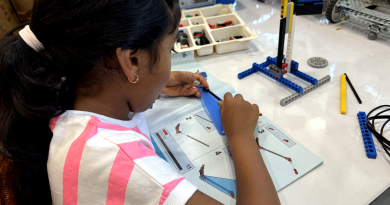A smart second skin gets all the power it needs from sweat
Skin is the largest organ of the human body. It conveys a lot of information, including temperature, pressure, pleasure and pain. Electronic skin (e-skin) mimics the properties of biological skin. Recently developed e-skins are capable of wirelessly monitoring physiological signals. They could play a crucial role in the next generation of robotics and medical devices.
My lab at Caltech is interested in studying human biology and monitoring human health by using advanced bioelectronic devices. The e-skin we have developed not only analyzes the chemical and molecular composition of human sweat, it’s fully powered by chemicals in sweat.
Existing e-skins and wearable devices primarily focus on monitoring physiological parameters like heart rate and can’t assess health information at the molecular level. Moreover, they typically require batteries to power them, and the batteries need to be recharged frequently.
Despite recent efforts to harvest energy from the human body, there are no reports of self-powered e-skins that are able to perform biosensing and transmit the information via standard Bluetooth wireless communications. This comes down to the lack of power efficiency. There is a need for a self-powered device that can continuously collect molecular as well as physical information and wirelessly transmit the information to other devices.The approach we take to harvesting energy from the human body is based on biofuel cells. Fuel cells convert chemical energy to electricity. The biofuel cells we developed for our e-skin convert the lactic acid in human sweat to electricity. In addition to the biofuel cells, the e-skin contains biosensors that can analyze metabolic information like glucose, urea and pH levels, to monitor for diabetes, ischaemia and other health conditions, as well as physical information like skin temperature. The e-skin, made of soft materials and attached to a person’s skin, performs real-time biosensing, powered solely by sweat.
The biofuel cells can generate a continuous, stable output as high as several milliwatts per square centimeter over multiple days in human sweat. That’s enough to power the biosensors as well as wireless communication. We demonstrated our e-skin by monitoring glucose, pH, ammonium ions and urea levels in studies using human subjects. We also used our e-skin as a human-machine interface to control the motion of a robotic arm and a prosthetic leg.
Source:https://sciencex.com




